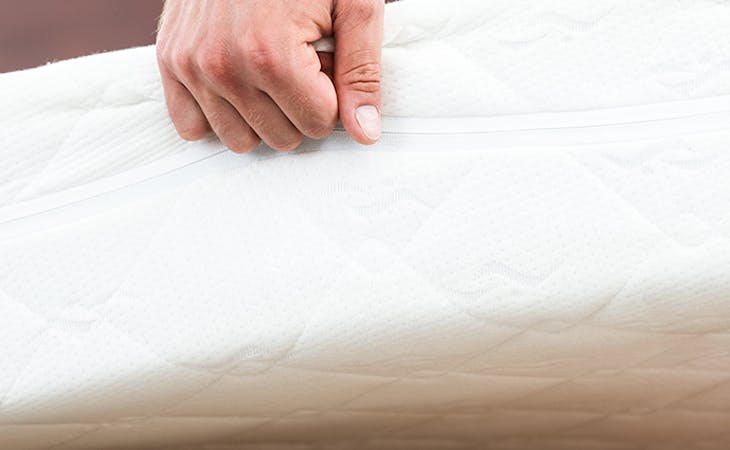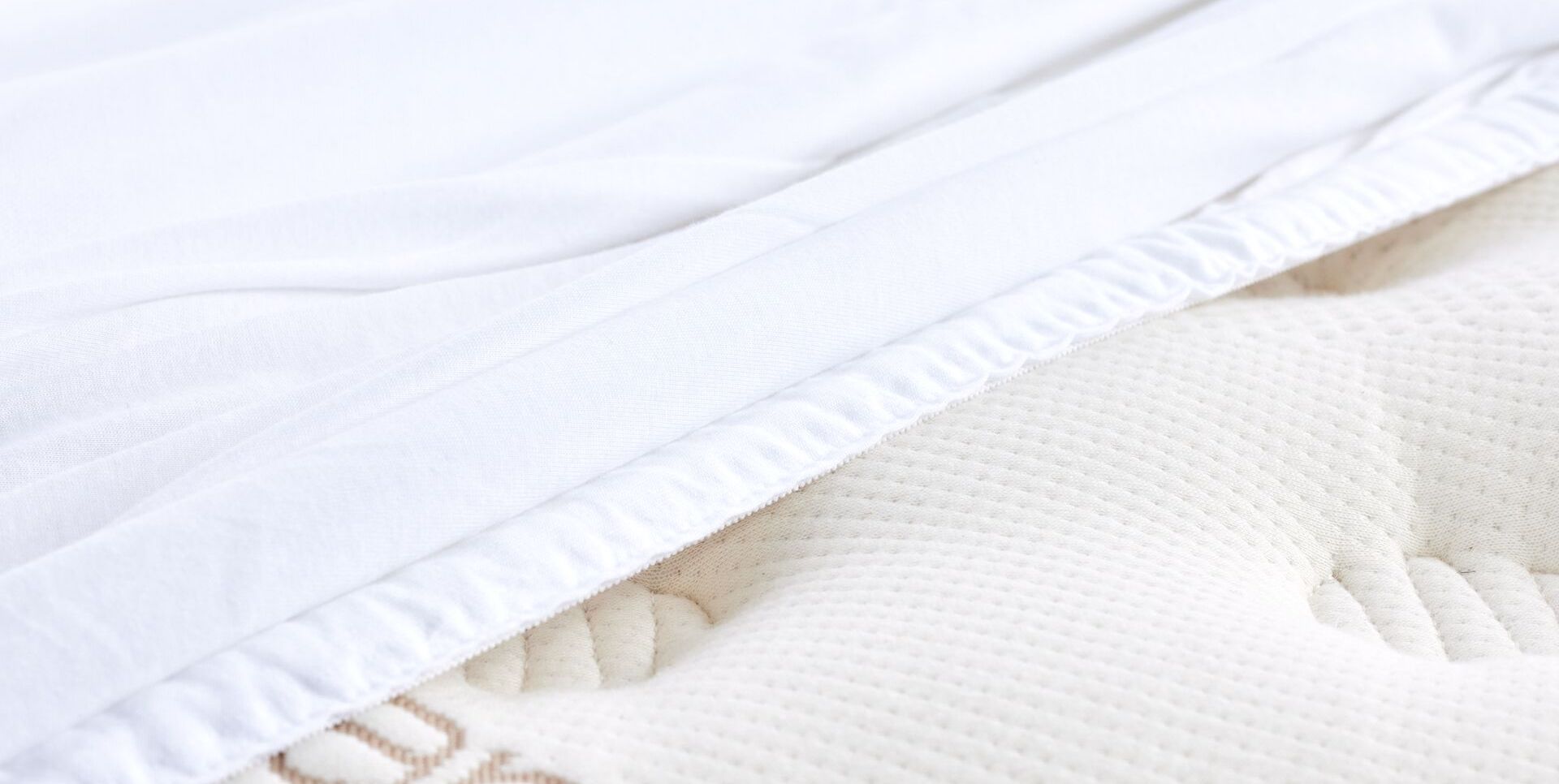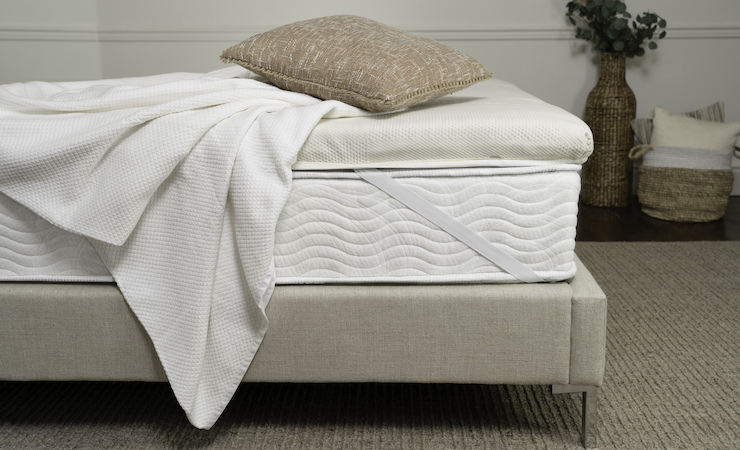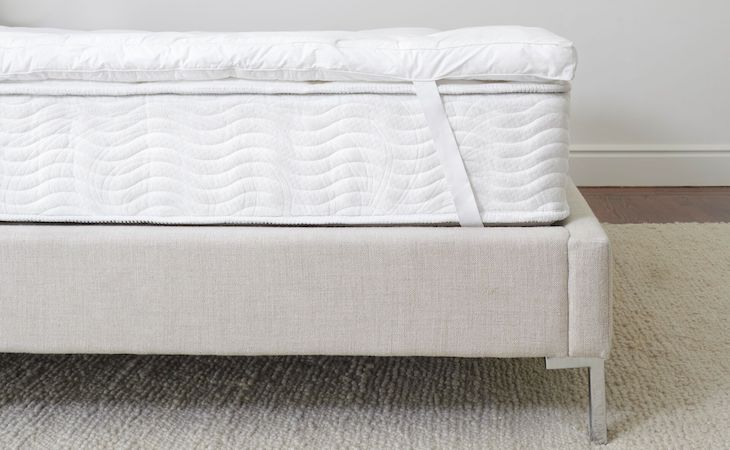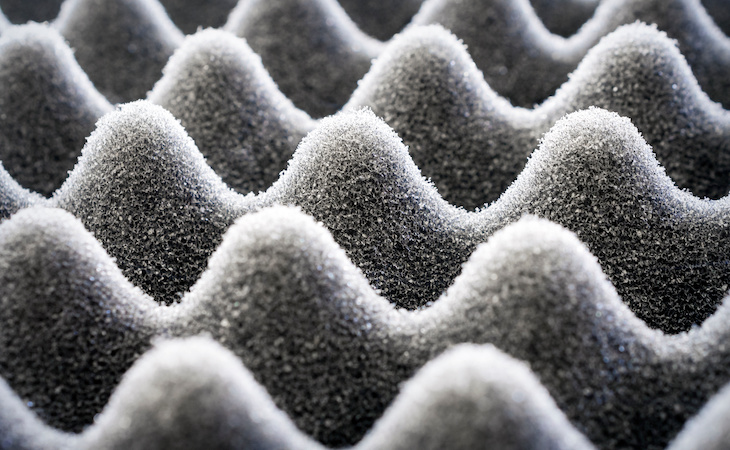So you’ve just gotten a new mattress. Now you can dress it in your best bed linens and enjoy a well-deserved night of blissful sleep.
Not so fast: If you want that mattress to stay fresh and comfy for years to come, the first thing you should do is safeguard your new purchase with a mattress protector.
As its name suggests, a mattress protector’s chief function is to keep dirt, dust, spills, and bugs out of your bed. After all, it’s easier to wash a removable protector than to clean a mattress (though if you ever need to spot-clean yours, here’s how to do it.) A protector prevents common occurrences, like sweat stains and minor tears, from shortening the life of your mattress and in some cases even voiding the warranty.
Here, learn more about mattress protectors and how to find the right one for you.
Types of mattress protectors
Mattress protectors come in different styles and materials, depending on what you need protection against. If you’re regularly visited by small children or pets in bed, you’ll want a protector that’s waterproof. An allergy-proof protector will prevent dust mites, pet dander, mold, and other allergy triggers from accumulating in your mattress. And if bed bugs are a concern, a thick protector that encases the entire mattress will prevent bugs from getting in and making a home there.
Really, says New York University microbiologist Philip Tierno, PhD, you should get a protector no matter what. Tierno, who told Business Insider he wouldn’t sleep a night without one, estimates that a protector can extend the life of a mattress by five to 10 years.
Mattress protectors are grouped into three main categories, according to how they attach to the mattress: encasement, fitted-sheet style, and strapped.
Encasement
A zippered mattress protector covers the mattress fully on all six sides. If you want to protect your mattress from bed bugs, dust mites, allergens, and contaminants, this is the way to go. Make sure to choose one with a micro-tooth zipper—a zipper small enough so that bed bugs can’t get in.
Fitted
A fitted mattress protector has an elastic “skirt” and covers the mattress on five sides like a fitted sheet. The waterproof top layer will protect the mattress from spills and stains, but because only five sides are covered, it will not protect against bed bugs and allergens. If you don’t have allergies and are not worried about coming in contact with bed bugs, this is a perfectly fine choice.
Strapped
A strapped mattress protector sits on top of the mattress and is secured to it with elastic straps at each corner. It can provide a tighter fit than a fitted-style protector, but it covers only the top of the mattress, not its sides or bottom.
Common mattress protector materials
Some of the common materials that mattress protectors can be made from are cotton, polyester, vinyl, polyurethane, or a blend of these.
Polyurethane is a highly breathable, super-thin membrane that makes the protector waterproof. It has microscopic pores that allow sufficient airflow but still prevent liquids, dust mites, and bed bugs from getting in.
Vinyl is just as effective in protecting the mattress against liquids and pests but is much less breathable than polyurethane. It traps moisture and sweat and can also be noisy to sleep on. The bigger problem is that some types of vinyl are considered toxic, releasing chemicals that may cause serious long-term health conditions, so some experts say it’s best to avoid it completely.
Mattress protectors made from polyester (or a blend of polyester and other fabrics) are easy to care for and often cost less than other options. Polyester itself is not waterproof, but it is quick-drying. It’s also not hypoallergenic.
Cotton in a mattress protector (often in the form of velour or terry cloth) will give you the top benefits you’re used to getting from cotton: softness and breathability. So can some other fabrics, like bamboo and Tencel® Lyocell, a hypoallergenic, moisture-wicking fabric made from the pulp of eucalyptus trees.
Related: Mattress pads, protectors, and toppers: Which do you need?
Mattress protector costs and care
You should be able to get a good basic mattress protector for less than $50, but some more bells and whistles, such as those made with special cooling fabrics, can go for up to $200 and more. Many come with warranties up to 10 years, so if you follow the care instructions on the label, your mattress protector should last you a long time.
Speaking of care, since your trusty mattress protector now collects all the dirt, dust, and skin cells that would otherwise end up in your mattress, you should make sure to wash it regularly, every month or two—more often if you have pets or allergies. Most mattress protectors are machine washable, but check the instructions to be sure. Typically they can be washed in cold or warm water, on delicate setting without any harsh detergents. If you plan to tumble dry your waterproof protector (and if the care instructions allow that), make sure to dry on low heat, as high heat may damage the waterproof layer.
FAQs
What is the point of a mattress protector?
The point of a mattress protector is to keep your mattress free of dirt, dust, spills, and bugs. It can also help prevent common occurrences, like sweat stains and minor tears, from shortening the life of your mattress and in some cases even voiding the warranty. By using a mattress protector, you’ll be able to keep your mattress fresh and comfy for years to come.
What is the best mattress protector material?
The best mattress protector material depends on what you need protection against. For instance, polyurethane is highly breathable, waterproof, and protects against pests, while vinyl protects against liquids and pests but isn’t as breathable. Polyester, on the other hand, isn’t waterproof or hypoallergenic, but it’s inexpensive and easy to care for. Choose the mattress protector material that best suits your sleep hygiene needs.
Next, learn all about mattress toppers and find out which one will benefit your sleep the most.

